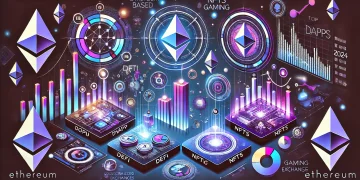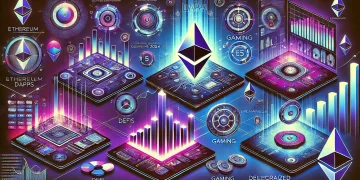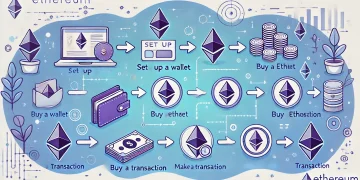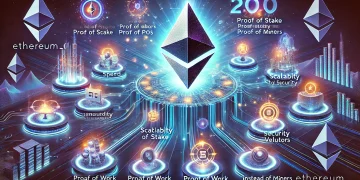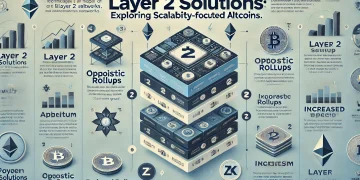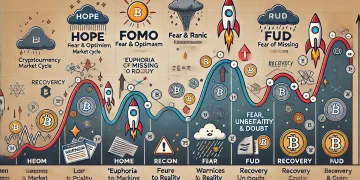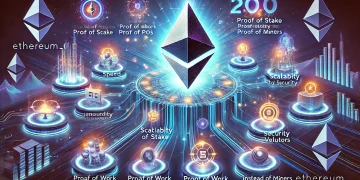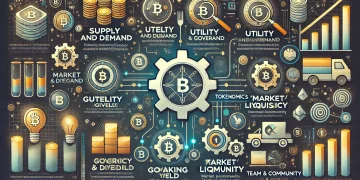Blockchain technology, often synonymous with cryptocurrencies like Bitcoin and Ethereum, is quickly proving its utility far beyond the world of digital currencies. While its decentralized, transparent, and secure nature underpins the cryptocurrency ecosystem, blockchain’s potential for innovation extends into numerous industries. From healthcare to supply chain management, blockchain technology is becoming a transformative force for good. This article explores five groundbreaking blockchain use cases beyond cryptocurrency that are poised to redefine how we operate in the digital age.
1. Blockchain in Supply Chain Management
One of the most promising and widely recognized blockchain applications is in supply chain management. Blockchain’s ability to provide transparency, traceability, and trust in complex supply chains makes it an ideal solution for industries ranging from food production to manufacturing.
How Blockchain Improves Supply Chains
The supply chain typically involves multiple parties—manufacturers, suppliers, warehouses, retailers, and consumers—making it difficult to track products as they move from one point to another. Traditional supply chain systems are often prone to inefficiencies, errors, and fraud. This is where blockchain technology steps in, offering key advantages such as:
- Enhanced Transparency: Blockchain records every transaction made during a product’s journey in a secure, immutable ledger. Each participant can see and verify the product’s origins and changes over time.
- Product Traceability: Blockchain allows companies to trace products from the source of raw materials all the way to the consumer. This is particularly crucial for industries like food and pharmaceuticals, where any contamination or defect can have severe consequences.
- Fraud Reduction: Since blockchain ensures that no transaction can be altered or deleted without detection, it significantly reduces the chances of fraud and counterfeiting.
Real-World Example: Walmart’s Use of Blockchain for Food Safety
One of the most famous examples of blockchain’s application in the supply chain comes from Walmart. The retail giant has partnered with IBM to use blockchain technology for tracking produce from farm to store shelves. By using blockchain, Walmart can trace the origin of a contaminated food item in a matter of seconds instead of days or weeks, improving both food safety and supply chain efficiency.
2. Blockchain in Healthcare
The healthcare industry is another sector ripe for blockchain disruption. With the growing need for secure and efficient management of medical data, blockchain is emerging as a powerful tool to address the sector’s challenges.
How Blockchain Transforms Healthcare
Blockchain’s decentralized nature enables secure, transparent, and efficient sharing of medical data among various healthcare providers and patients. Some of the benefits include:
- Improved Data Security: Healthcare data is highly sensitive and a prime target for cyberattacks. Blockchain’s cryptographic security features make it nearly impossible for hackers to alter or access this data without authorization.
- Interoperable Health Records: Today’s healthcare systems are often fragmented, making it difficult for healthcare providers to access a patient’s complete medical history. With blockchain, a patient’s health records can be securely shared across different healthcare systems, improving care coordination and reducing redundant tests or procedures.
- Patient-Centric Care: Blockchain allows patients to have complete control over their medical records, deciding who has access to their data. This promotes a patient-centric approach to healthcare, where individuals can easily share their records with specialists or other medical professionals.
Real-World Example: MedRec’s Blockchain-Based Medical Records
MedRec, developed by researchers at MIT, is a blockchain-based platform aimed at streamlining the sharing of medical records. The system allows patients to control their healthcare data and gives them the ability to grant access to providers. MedRec ensures privacy and accuracy while making medical records readily available in emergencies.
3. Blockchain in Voting Systems
One of the most controversial but potentially game-changing applications of blockchain is in the realm of voting systems. In many parts of the world, election integrity is a major concern. Blockchain offers a way to create secure, transparent, and tamper-proof voting systems that could eliminate voter fraud and ensure free and fair elections.
How Blockchain Enhances Voting
Traditional voting systems are susceptible to manipulation, errors in vote counting, and restricted access for certain populations. Blockchain offers several advantages for voting:
- Transparency and Auditability: Blockchain records each vote in a publicly accessible ledger, making the entire voting process transparent and auditable. Every vote can be traced without revealing the voter’s identity, ensuring both transparency and privacy.
- Tamper-Proof: Once a vote is cast and recorded on the blockchain, it cannot be altered or deleted, ensuring that results cannot be manipulated.
- Increased Voter Participation: Blockchain-based voting can enable remote or online voting, making it easier for citizens—especially those in remote locations or with limited mobility—to participate in elections.
Real-World Example: Voatz Blockchain-Based Voting in West Virginia
In 2018, West Virginia became the first U.S. state to pilot blockchain-based voting in a federal election. Using the Voatz app, military personnel stationed overseas were able to cast their votes securely via blockchain. This experiment highlighted blockchain’s potential to make voting more accessible while safeguarding the integrity of the electoral process.
4. Blockchain in Intellectual Property and Digital Rights Management
In the creative industries—whether it’s music, art, or literature—ensuring that creators are fairly compensated for their work is a constant challenge. Copyright infringement, piracy, and the difficulty in tracking digital rights are significant concerns. Blockchain offers a solution by providing a transparent and secure platform for intellectual property (IP) management and digital rights management (DRM).
How Blockchain Protects Intellectual Property
Blockchain can record and verify the creation, ownership, and transfer of creative works in a tamper-proof ledger. This gives creators a verifiable and immutable record of their work, which can be used to:
- Prove Ownership: Blockchain can timestamp and record the creation of a digital asset (such as a song, artwork, or manuscript), ensuring proof of ownership that can be legally verified.
- Simplify Royalty Payments: Smart contracts—self-executing contracts stored on a blockchain—can be used to automate royalty payments to creators based on how their content is consumed or shared.
- Combat Piracy: Blockchain’s transparent nature makes it easier to track how digital content is distributed and consumed, helping combat piracy and unauthorized use.
Real-World Example: Ujo Music and Blockchain-Based Music Rights
Ujo Music is a blockchain-based platform that aims to transform the music industry by giving musicians control over their work. Artists can release music directly to consumers via the platform, where blockchain is used to manage rights and distribute payments automatically. This eliminates the need for intermediaries, allowing musicians to retain more control and profit from their creations.
5. Blockchain in Real Estate
The real estate industry is traditionally slow-moving, with numerous intermediaries involved in the process of buying, selling, and leasing property. Blockchain technology offers a way to streamline real estate transactions, reduce fraud, and simplify the cumbersome paperwork associated with property management.
How Blockchain Improves Real Estate Transactions
Real estate deals typically involve lengthy processes, including verification of ownership, title checks, and a significant amount of paperwork. Blockchain can streamline these processes by:
- Simplifying Property Transactions: Blockchain can store property ownership records in a transparent, tamper-proof ledger. This eliminates the need for traditional title searches and deed verifications, which can delay transactions.
- Enabling Fractional Ownership: Blockchain allows for fractional ownership of properties, meaning that a property can be divided into smaller units, and ownership can be shared among multiple people. This makes it easier to invest in real estate without needing to buy a whole property.
- Automating Transactions with Smart Contracts: Blockchain-enabled smart contracts can automate property transactions, releasing funds once certain conditions are met. This reduces the need for intermediaries such as escrow agents and lawyers.
Real-World Example: Propy’s Blockchain-Based Real Estate Platform
Propy is a blockchain-powered real estate platform that aims to make international real estate transactions faster, simpler, and more secure. By using blockchain to record property ownership and automate contracts, Propy significantly reduces the time and costs involved in buying or selling a property, especially across borders.
Conclusion
Blockchain technology is revolutionizing industries far beyond cryptocurrency. From supply chain management and healthcare to voting systems and intellectual property protection, blockchain is offering secure, transparent, and efficient solutions to age-old problems. As the technology continues to mature, we can expect even more innovative applications of blockchain across various sectors.
The use cases discussed above are just the beginning—blockchain’s potential to reshape the way we do business, manage data, and interact with one another is immense. Whether it’s ensuring the integrity of supply chains, protecting medical records, or safeguarding election results, blockchain is a game-changer poised to lead us into a more decentralized, transparent future.

